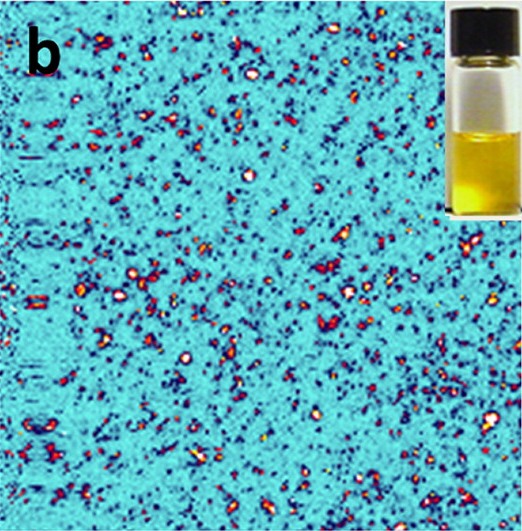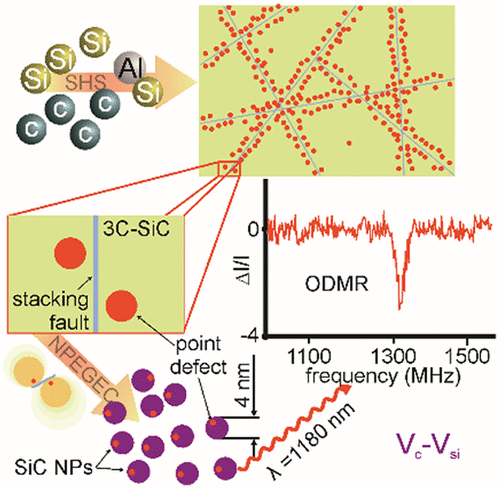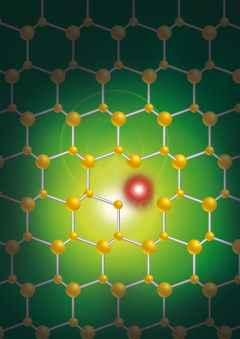A solid-state single-photon source with world-record brightness has been designed in an international collaboration with partners from Australia and Japan. The investigation of the feasibility of a single-photon source colour centre in silicon-carbide and its implementation as the carbon antisite-vacancy defect has been supported with theoretical work by our experts. The results have been published in Nature Materials.
|
|
Figure 1. The colour centre, which emits red light, is embedded in 4H silicon carbide. It consists of a carbon vacancy (a carbon atom missing from SiC lattice) and a neighbouring silicon atom substituted with carbon. Silicon and carbon atoms are represented by large and small balls, respectively. |
Colour centres are crystal point defects which emit light in the visible range. This emission takes place under exposure of light with another wavelength, which can be extremely strong if the incoming light has the appropriate wavelength. If locations and distribution of colour centres are well-engineered within the embedding material, these centres can be deployed as efficient single-photon sources. Controlled production of single photons is of eminent importance in quantum metrology. These single colour centres might be applied to map the three-dimensional structure of proteins in real-life conditions and determine their physical properties. The future generation of computers, the quantum computers also use single-photon sources as fundamental components.
At Wigner ADMIL laboratory, we have succeeded manufacturing similar colour centres in colloidal 3C silicon-carbide quantum dots (SiC-QD). This result, which has been published in ACS Nano, may open new ways for in-vivo biological imaging and other measurement techniques; contributing to human diagnostics and therapy in the more distant future.
 |
Figure 2. Confocal scan of the colloidal solution of nanoparticles containing single-photon emitters. The inset shows the visible image of colloidal solution. |
At Wigner ADMIL laboratory, we developed a wet chemistry method for preparation of ultrasmall cubic (3C) silicon carbide (SiC) nanoparticles, with providing an explanation for the underlying mechanism as reported in Scientific Reports. We further processed these SiC nanoparticles to generate divacancy point defects inside which produced room temperature optically detected magnetic resonance (ODMR) signals with relatively high contrast. These results constitute the formation of nonperturbative bioagents for quantum sensing and efficient hyperpolarization. The results were published in the Journal of Physical Chemistry Letters.
 |
Figure 3. Schematic diagram about creating cubic (3C) silicon carbide (SiC) nanoparticles with the "no-photon exciton generation chemistry" (NPEGEC) method near the stacking faults which results in room temperature optically detected magnetic resonance signals from as small as ~4 nm sized SiC nanoparticles. |

